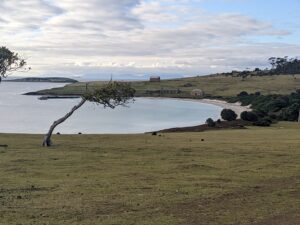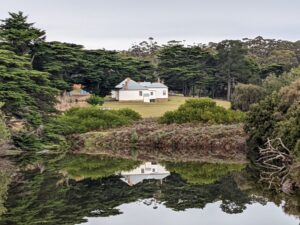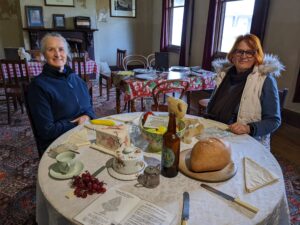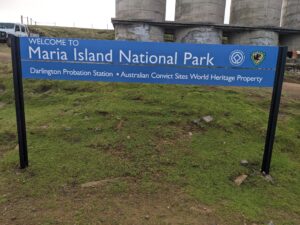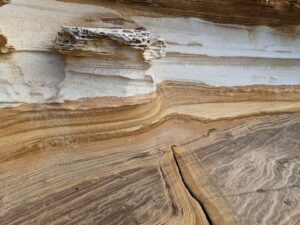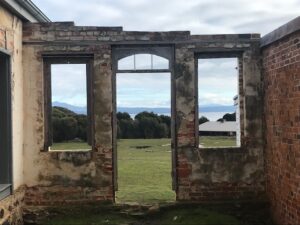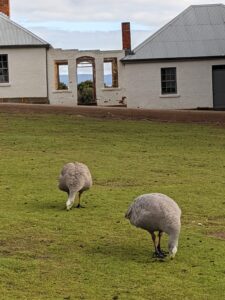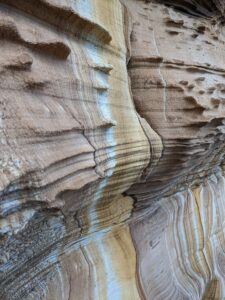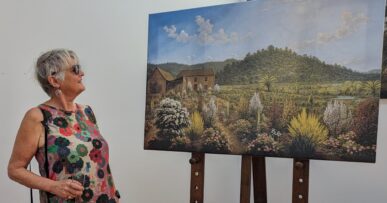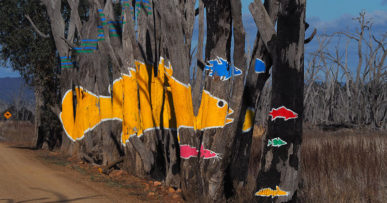Escape to a Convict Island
By Marjie Courtis
9 October 2023

Bound for Maria Island, Tasmania
I was bound for Maria Island in June. A billboard at Hobart airport gave me a tongue-in-cheek welcome: “You’re arriving in Tasmania in the off season. Hope you know what you’re in for!”
Cute little bronze sculptures of Tasmanian devils and wombats in the baggage claim area gave a more endearing welcome and propelled me to the exit door.
Fortunately I did know what I was in for. Thanks to advice from my Tasmanian friends, I was well prepared for a relatively stringent stay in The Penitentiary, on Maria Island. This former gaol is one of fourteen convict buildings at the Darlington Probation Station, which in turn is one of eleven “Australian Convict Sites” collectively granted UNESCO World Heritage status in 2010.
More than Convicts and a UNESCO World Heritage Listing
But the convict era is a mere drop in nearby Darlington Bay in terms of the island’s overall history. The landscape offers up time capsules of natural history, exploration, Aboriginal life, and post-colonial history.
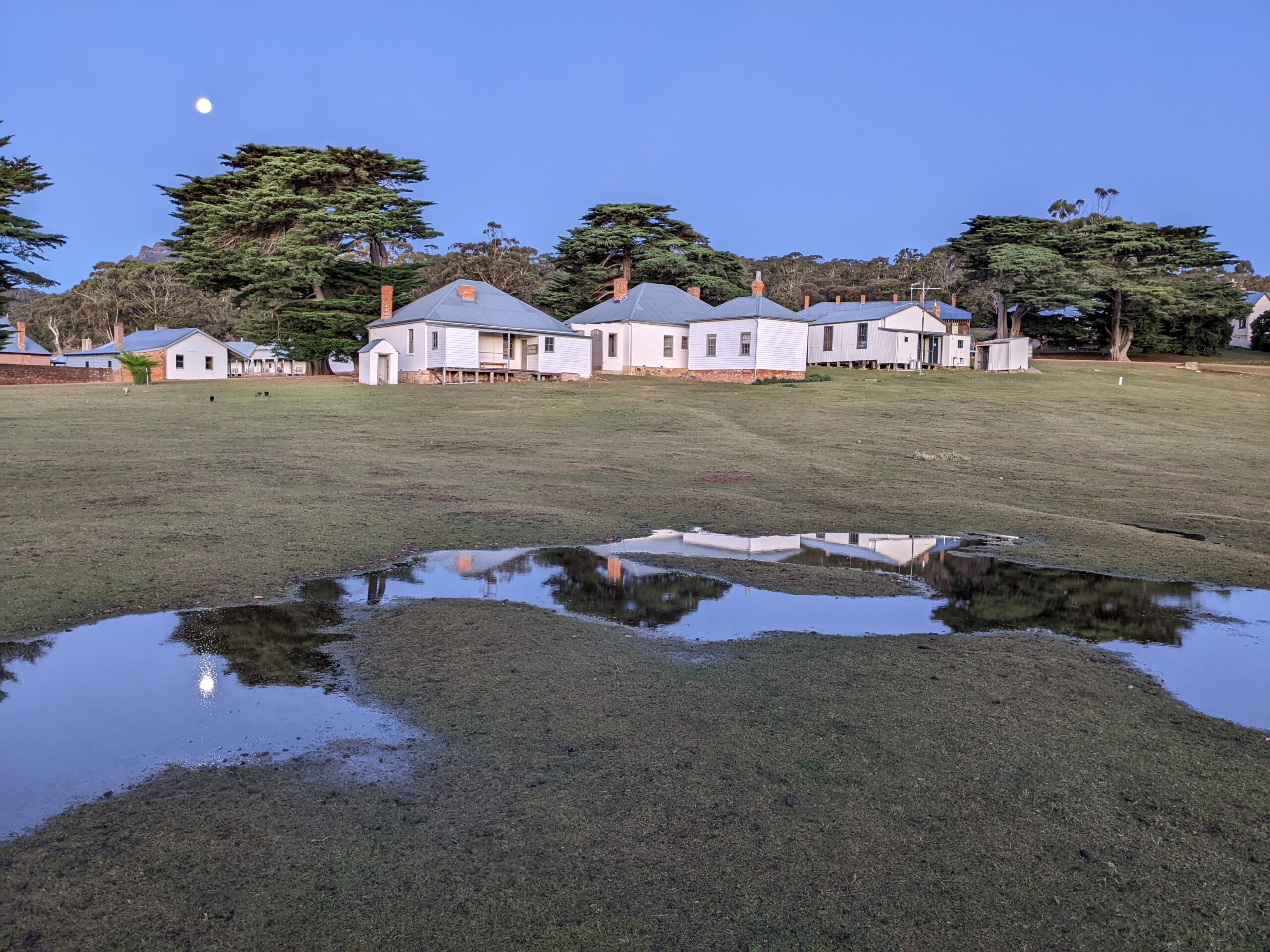
Staying in the simple bunks of the whitewashed Penitentiary was an immersive experience. The Penitentiary was made of 200,000 locally made bricks from 1830. We were in the same space as that used by the transported convicts. Our privations were minor by comparison, but we did sleep in simple bunks, had no electric lighting, and we largely relied on self-kindled wood fire stoves and candles for heating and light. We prepared our meals in the same Mess Hall that the convicts used but with rather more interesting food than their daily rations of salt beef, flour, salt and vegetables. We had to stash our provisions at night into a safe place so the wildlife didn’t eat them.
For us of course, there was no incentive to escape. This was our escape.
Like the convicts, we had little use for money. There is only one monetary transaction you can undertake on Maria Island and that’s the rental of a mountain bike. And although there’s a Coffee Palace, you can’t buy coffee there. It’s one of many mini museums on the island, though in this case, it’s not from the Convict Era.
The Commissariat Store, the Penitentiary, the Mess Hall, the Convict Barn, the Officer and Administrative Quarters, Smith O’Brien’s cottage and other convict era buildings contained artefacts, stories and explainers. There were also many exhibits describing the flora and fauna, geology and exploration history of the island.
But since the island has been through other post-Colonial periods of industrial and pastoral activity, there were other buildings recalling them.
For example, the Coffee Palace marks a time in the history of the island, and the nation, when coffee palaces were seen by the Temperance Movement as a means of combating the sinful presence of hotels and their unholy beverages. It was well re-created with crockery and dining settings from the era and historic audio track to create the atmosphere. We indulged in a mock afternoon tea complete with ceramic cheese and fruit!
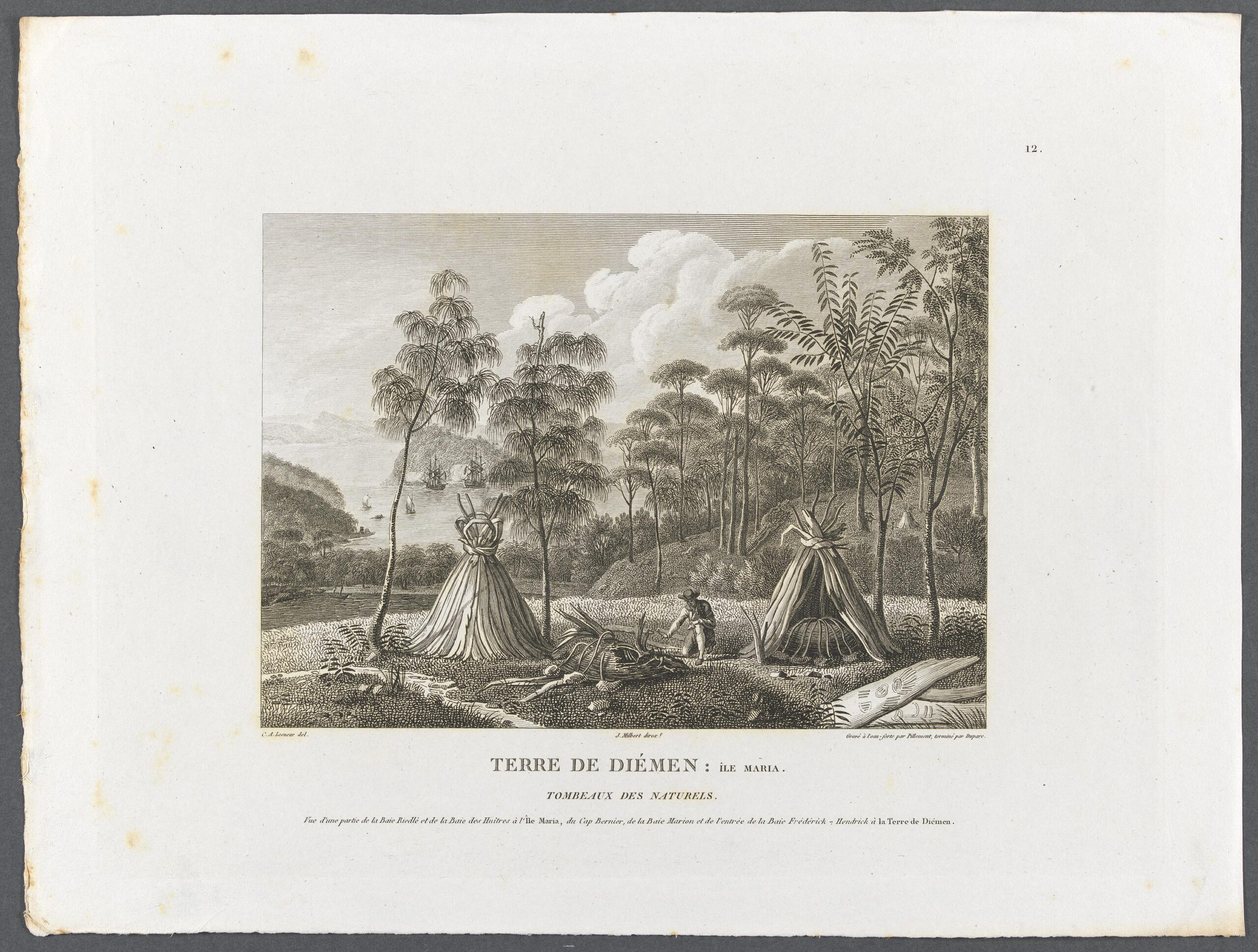
I spotted one exhibit on the island of a map of Maria Island by a French explorer, M Boullanger in 1802. It inspired me to do more of my own exploration when I arrived home. Although it was Britain that colonized Australia, it was the French explorers who documented and collected flora and fauna and left significant documentary evidence of their interaction with Aborigines on Maria Island. The Puthikwilayti people used to call the Island Wukaluwikiwayna until Dutch explorer Abel Tasman named it after the wife of his governor, Van Diemen. French explorer Bruny D’Entrecasteaux, botanists like Jacques Labillardière and artists like Nicolas Martin Petit and Charles Lusueur have captured aboriginal huts and tombs in beautiful drawings.
Getting around
Caged trolleys on the island are your freight transport for luggage and firewood. Biking or walking is your personal means of getting around.
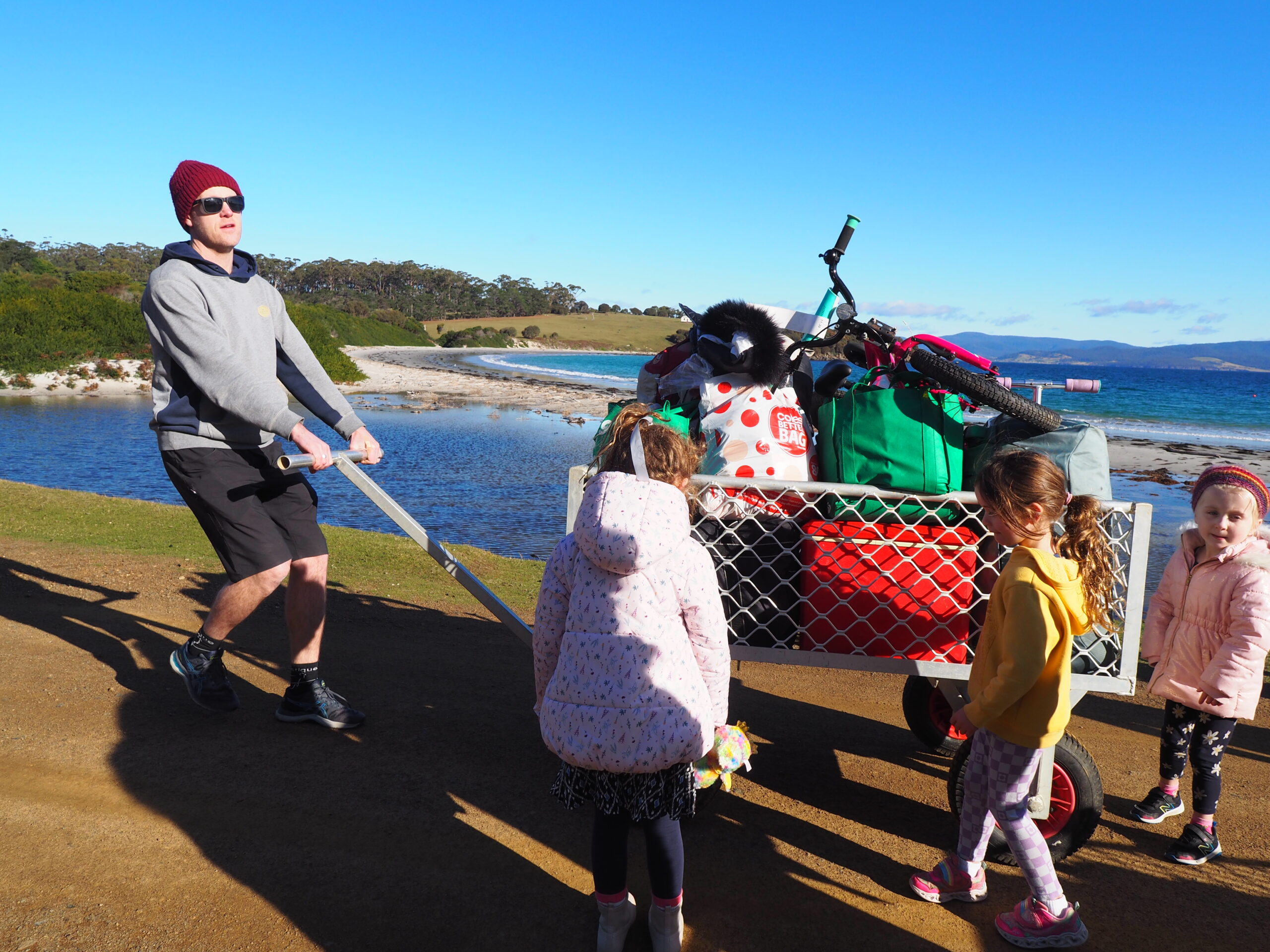
Decision-making about hiking or biking is pretty simple. An agglomeration of sign posts near the penitentiary show all directions, distances and timings for both bikes and walks. Many tracks are shared.
Within several hours of the Convict Site on a round trip were the Permian Limestone at the Fossil Cliffs and the Triassic sandstone at the Painted Cliffs. Keep walking and you can discover Tertiary Laterite, Jurassic Dolerite, Devonian Granite and other geological specimens. Here we were going back hundreds of million years.
Wombats on Maria Island
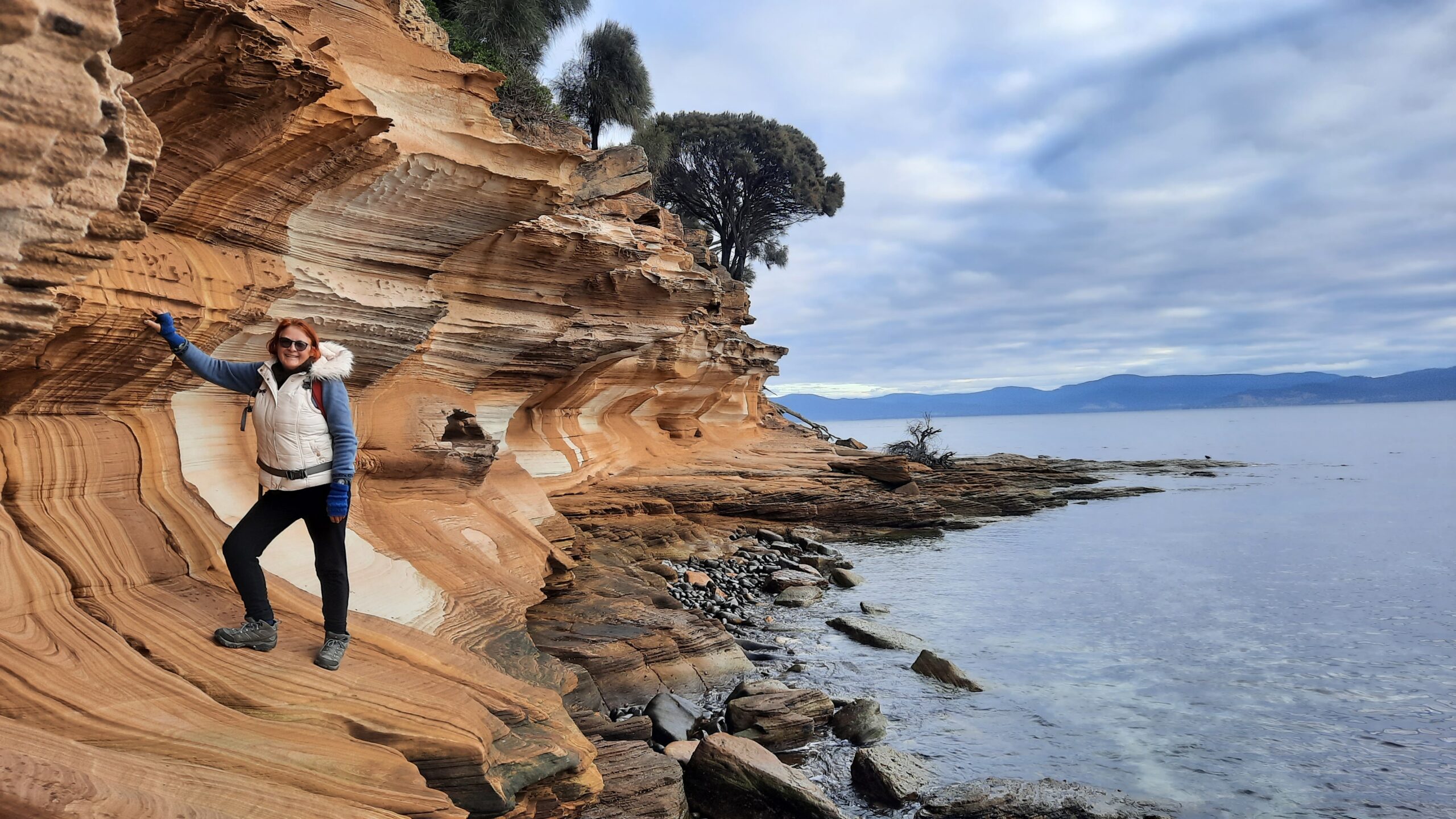
We could get up close – and even personal – with the animals on Maria Island. We encountered wombats, native hens (“turbo chooks”) and Cape Barren Geese grazing harmoniously. Pademelons and parrots seemed to prefer slightly different patches.
The Cape Barren Geese have been decimated by the introduced Tasmanian Devil which is there for species protection. But the geese are adapting, and many have moved from ground-laying to tree nesting. Island isolation offers all sorts of wonders to humans and animals alike.

Meanwhile, the Wombat population keeps on expanding. They are so much at home with people that they occasionally muzzled in on us, pushing against our legs. We were asked not to get too close to them but what could we do about them approaching us? It’s a case of “Wombats rule” on Maria Island.
Here wombats have ditched the evolutionary trend to live nocturnally. Their squarish droppings aren’t too hazardous because they’re carefully deposited in clusters on hard surfaces like concrete or rocks. The slippery droppings of the Cape Barren geese are another matter. I didn’t expect that I’d be quite so interested in the erudite article from the Royal Society of Chemistry on display in the Commissariat Store on how the “Intestines of non-uniform stiffness mould the corners of wombat feces”.
“One of the loveliest spots”
Did I tell you how beautiful it was? You can experience that however you visit. We relished our immersive experience, though I know a number of Mainlanders who have preferred to venture there with the more upmarket Maria Island Walk .
Staying in The Penitentiary is a more local choice and is popular with backpackers and families. “Keep it a secret” said Chantale. But how could I?
An earlier penitent, William Smith O’Brien, a former MP with political convictions was transported here during the convict era. He had sighted Maria Island from his convict ship in November 1849 and realized that this was“… a gaol in one of the loveliest spots formed by the hand of Nature.”
I hope that for Smith O’Brien too, Maria Island was an experience to treasure, despite his desire for a different kind of escape.
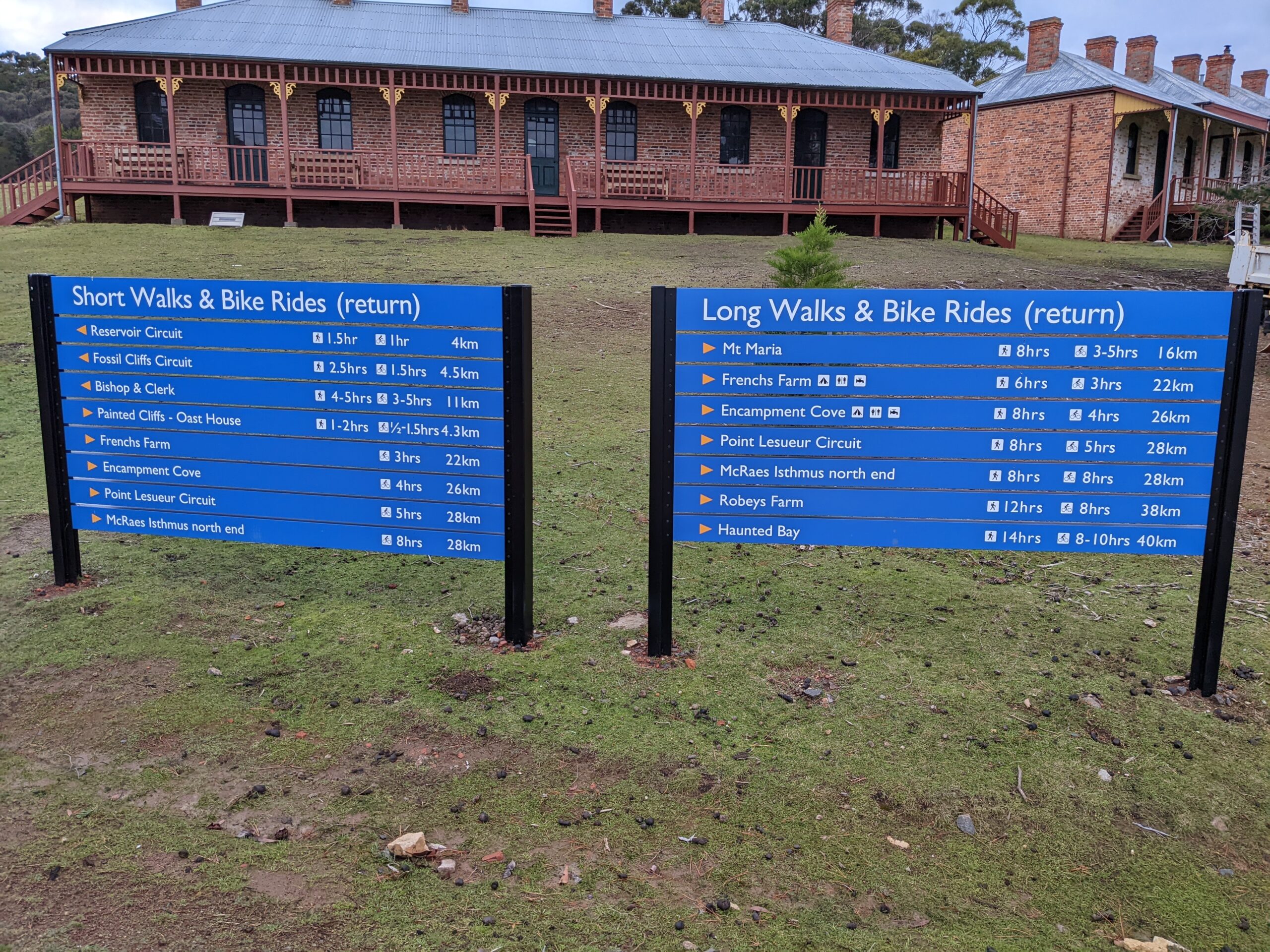
More photos from Maria Island

